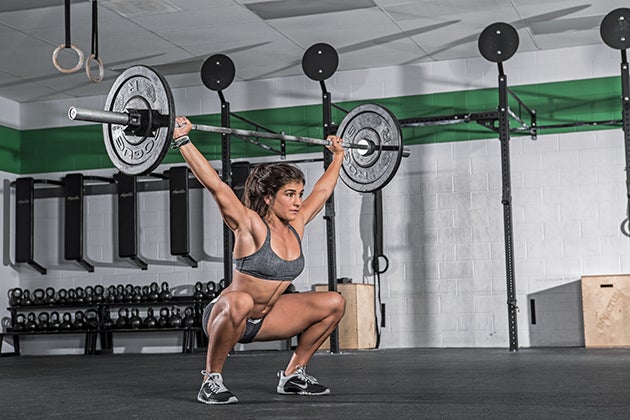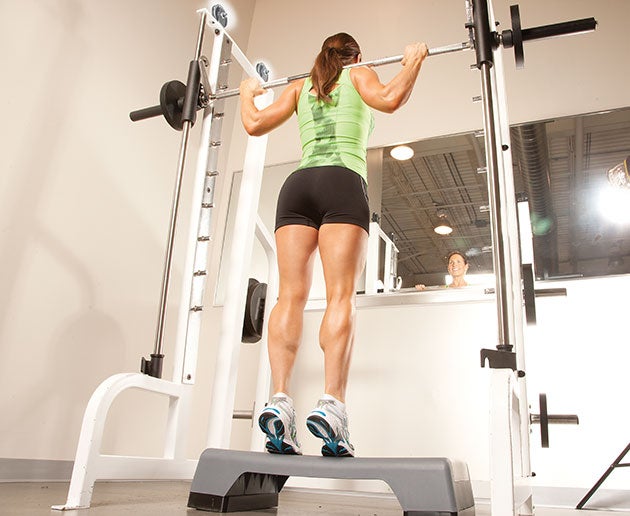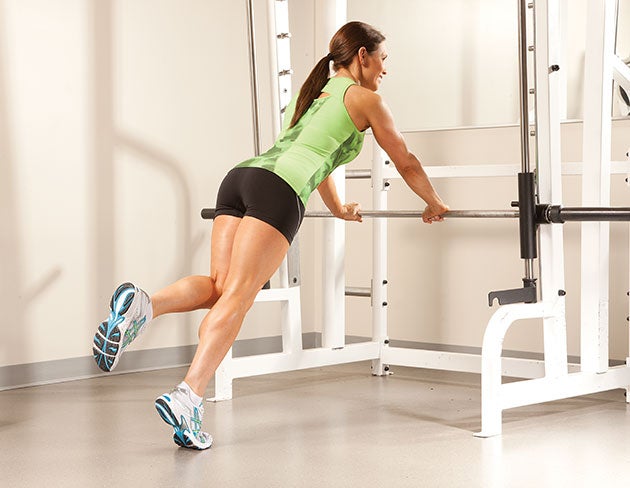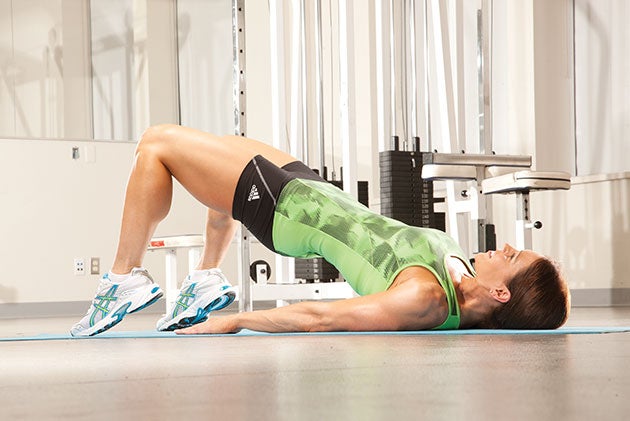Heading out the door? Read this article on the new Outside+ app available now on iOS devices for members! Download the app.
Strong, shapely calves are not only feminine and sexy, they’re downright powerful. If you want legs that would make you a serious Dancing with the Stars contender, complete with strong calves that look great in Louboutins, you need to focus on your lower-leg training — and that’s just what this total-calf workout from Oxygen aims to do.
Isolation Training
If you are hoping that lunges and squats are all you need to train your gastrocnemius and soleus, the major muscles of your calves, think again. They do help, but to chisel curved calves, you’ll want to zero in on the area. For example, “since the soleus is a single-joint muscle with only one action – plantar flexion of the foot – it responds well to isolation exercises,” says Jason Karp, PhD, a San Diego-based exercise physiologist and owner of runcoachjason.com. That means a calf-centric routine is the key to getting the best definition possible.
See AlsoTrain Your Calves
And while plantar flexion — lifting your heels by pressing up onto the balls of your feet — optimally targets your calves, you shouldn’t limit yourself to the seated calf machine. In fact, you’ll get killer calves faster if you change up your body’s position.
The Perfect Mix
To help condition your calves, we’ve assembled exercises for your upper calves (the gastrocnemius) and the lower, deeper portion of your calves (the soleus). And here’s a trick to remember for proportioned lower legs: standing exercises are good for targeting the gastrocnemius, while moves in which your knees stay bent hit the soleus nicely. The reason? Your gastrocnemius — the muscle that gives you curved definition just under the backs of your knees — passes over your ankle and knee joints and is most engaged when your legs are straight; when your knees are bent, your soleus takes over.
Composition Comparison
Another difference has to do with muscle fibers. “The soleus is mostly a slow-twitch-fibered muscle, meaning it’s suited for endurance training,” says Karp — think lighter weights, lots of reps and short recoveries between sets. Compare that to the gastrocnemius, which is, for the most part, “a fast-twitch-fibered muscle better suited for strength/power training.” That means heavy weights and lower reps. Luckily for you, this routine works your calves with both of these needs in mind to produce fast definition.

Ready? Do this routine twice per week on non-consecutive days, or add some of the moves to the end of your regular leg workouts. Finally, don’t forget that cardio such as running also helps you carve out calves worthy of attention.
Smith Machine Calf Raise

Target Muscles: gastrocnemius
Set Up: Stand on a step at a Smith machine, adjusting the bar height so that it sits across your shoulders. Your feet should be hip-width apart, heels hanging off the back of the step and extending toward the floor.
Action: Press through the balls of your feet to lift your heels, then slowly lower to the start. Try altering your position to target different areas: point your feet in to hit your lateral heads and point them out to target the inner portions.
Angled One-Legged Body-Weight Calf Raise

Target Muscles: gastrocnemius
Set Up: Adjust a Smith machine so that the bar is at approximately hip height. Place your hands shoulder-width apart on the bar and extend your legs behind you to bring your body into a straight line. Lift one foot from the ground, keeping the other foot planted.
Action: Raise your heel slowly from the floor, pause, then use control to return to the start. When you have completed your set, switch legs and work your other side.
Seated Calf Raise

Target Muscles: soleus
Set Up: Sit on the edge of a bench with your feet flat on the floor. Hold one dumbbell on each thigh; place a towel across your lap if you are uncomfortable.
Action: Press through the balls of your feet to lift your heels. Pause, then slowly return to the start without allowing your heels to touch the ground.
Body-Weight Bridge With Calf Raise

Target Muscles: soleus, gluteus maximus
Set Up: Lie faceup on a mat with your knees bent and feet flat on the floor. Raise your hips from the ground to come into a bridge position.
Action: Keeping your hips lifted and your body straight from your knees to your neck, raise your heels from the floor. Pause, then lower without touching your heels to the ground.
Outsmart the Charley Horse!
Avoid tight, crampy calves, which not only hurt, but can also increase your risk of injury in the gym. Do these stretches after working your calves or after a day in heels — a common culprit for tightness in the lower leg.
Standing stretch: Stand with your feet hip-width apart. Step your right leg forward, keeping a bend in your rear knee. Hinge forward slightly from your hips, straightening your front leg, then lift your toes toward your shin. Hold for 30 seconds; when complete, step your left leg forward and repeat. Bonus: This also targets your hamstrings.
Step stretch: Stand on an exercise step or the bottom step of a staircase with toes pointing forward. Position the balls of your feet close to the edge of the step, with your heels extending past its surface. Lower your left heel toward the floor, leaning slightly forward until you feel a stretch in your left calf. Hold for 30 seconds; when you are done, switch sides.